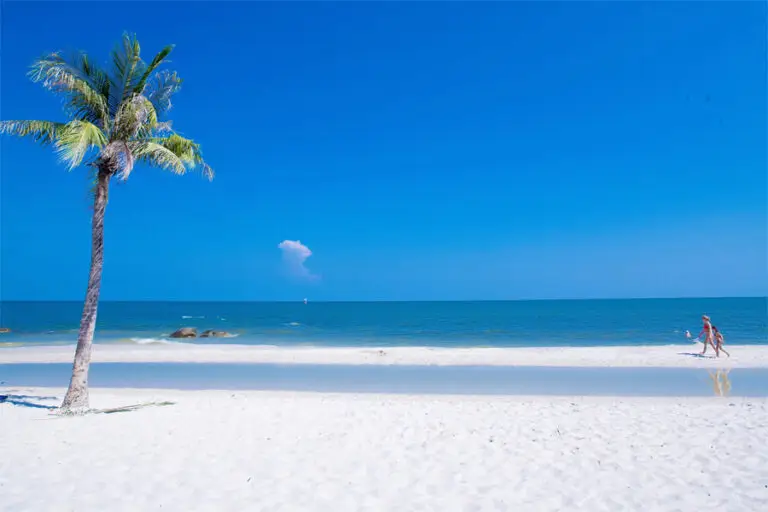The Best Time to Visit Vietnam
Vietnam’s diverse geography means that its weather varies significantly from north to south. The best time to visit the country is generally between December and February when the climate is milder and rainfall is at its lowest. Here’s a breakdown of what to expect:

Vietnam’s Diverse Climate: A Detailed Look
Vietnam, with its elongated geography, boasts a climate as varied as its landscapes. While it’s true that the country welcomes visitors year-round, understanding its weather patterns can greatly enhance the travel experience.
Monsoonal Influences: Vietnam is primarily influenced by two major monsoons.
-
Southwest Monsoon (May to September): This period marks the summer monsoon. Originating from the Indian Ocean, the southwest monsoon ushers in a warm, wet phase. The rains, while heavy, are usually short-lived, often occurring in sudden downpours in the afternoons. This can lead to localized flooding, especially in urban areas where drainage systems can be overwhelmed. The temperatures during this period are generally high, making it a sweaty affair for travelers. However, the lush landscapes and vibrant green rice terraces that come with the rains can be a visual treat.
-
Northeast Monsoon (November to March): Contrary to the summer monsoon, the winter monsoon brings cooler and drier air from the Asian continent. This phase is characterized by milder temperatures and reduced rainfall. The northern regions, especially areas close to the Chinese border, can experience misty, chilly conditions, with occasional drizzles.
Regional Variations:
-
Southern Vietnam: This region, which includes the bustling Ho Chi Minh City, enjoys a fairly consistent tropical climate. The dry season here, from December to April, is marked by clear skies and optimal beach weather, making it a favorite for sun-seekers.
-
Northern Vietnam: Places like Hanoi, Sapa, and Halong Bay have a more temperate climate. Spring (February to April) and autumn (August to October) are particularly delightful in the north. These periods see mild temperatures and a gentle breeze, perfect for sightseeing and outdoor activities. However, winter travelers should be prepared for colder temperatures, especially in elevated areas like Sapa, where mercury can drop close to freezing.
-
Central Vietnam: This region, home to historical cities like Hue and Hoi An, experiences a transitional climate, with patterns that are a mix of the north and south. While summers can be hot and rainy, the winter months are generally pleasant and dry.
Traveler’s Tip: While the monsoons play a significant role, it’s also essential to consider local festivals, regional holidays, and peak tourist seasons when planning a trip. Sometimes, the cultural experiences during these periods can outweigh any weather inconveniences.
Navigating the Monsoon Season in Vietnam
The monsoon season, while often associated with heavy rainfall and potential inconveniences, brings its own unique charm to Vietnam. The landscapes turn lush, the air feels fresh, and the country showcases a different facet of its beauty. However, for travelers, it’s essential to be well-prepared to make the most of their monsoon adventure in Vietnam.
The Rains and Their Beauty:
- Lush Landscapes: The monsoon breathes life into Vietnam’s terraced rice fields, painting them in various shades of green. Waterfalls become more voluminous, and rivers swell, offering a picturesque view of the countryside.
- Cooler Temperatures: The rains often bring respite from the tropical heat, making it a pleasant time for those who prefer cooler weather.
Travel Considerations:
- Fewer Crowds: One of the significant advantages of traveling during the monsoon is the reduced number of tourists. Popular destinations, which are usually crowded, become more serene, allowing for a more intimate experience.
- Mosquitoes and Insects: The wet season can lead to an increase in mosquitoes and other insects. It’s crucial to carry and regularly apply insect repellent, especially during dawn and dusk. Wearing light-colored clothing that covers the arms and legs can also help deter bites.
- Transportation Delays: Heavy rains can sometimes lead to transportation disruptions. Roads might get flooded, and some rural areas might become inaccessible. It’s essential to check weather forecasts and local news, especially if planning to visit remote regions.
- Accommodation: Some beach resorts and mountain lodges might close during the peak monsoon months. However, those that remain open often offer attractive discounts, making it a great time for budget travelers.
Packing Tips:
- Waterproof Gear: Carrying a lightweight rain jacket, waterproof bags (or bag covers), and sturdy, quick-drying footwear can make traveling during the rains more comfortable.
- Umbrellas vs. Ponchos: While umbrellas are handy, a poncho can often be more practical, especially when exploring on foot or on a motorbike.
Activities to Consider:
- Cultural Immersion: The wet days provide an excellent opportunity to delve into Vietnam’s rich cultural scene. Attend traditional music performances, explore museums, or take a local cooking class.
- Spa Days: Use the rainy days as an excuse to indulge in some relaxation. Vietnam offers a range of spa treatments, from traditional massages to herbal baths.
Bracing for Typhoon Season in Vietnam
Vietnam’s coastal location in Southeast Asia makes it susceptible to typhoons, particularly during the latter half of the year. While these natural events can be awe-inspiring in their power, they also bring challenges that travelers should be aware of. Understanding the typhoon season and being prepared can ensure a safer and more enjoyable trip.
Understanding Typhoons:
- Nature’s Powerhouse: Typhoons, also known as cyclones or hurricanes in other parts of the world, are powerful tropical storms formed over warm ocean waters. They can bring strong winds, heavy rainfall, and even lead to storm surges along the coast.
- Typhoon Paths: While typhoons can affect various parts of Vietnam, the central coast, including cities like Da Nang, Hue, and Hoi An, is often more vulnerable due to its geographical location.
Travel Implications:
- Flight Disruptions: Air travel can be significantly affected during a typhoon. Flights might be delayed, rescheduled, or even canceled. It’s advisable to check with airlines ahead of time and consider purchasing flexible tickets during this season.
- Infrastructure Impact: Typhoons can lead to power outages, water shortages, and damage to infrastructure, including roads and bridges. Coastal areas might experience flooding due to storm surges.
- Safety Concerns: Strong winds and heavy rainfall can make outdoor activities, especially water-based ones, risky. It’s essential to heed local advisories and avoid ventures like boat trips during a typhoon warning.
Preparation and Precautions:
- Stay Informed: Regularly check weather forecasts from reliable sources. Many international weather agencies provide updates on impending typhoons and their projected paths.
- Emergency Contacts: Always have a list of emergency contacts, including local authorities, your country’s embassy or consulate, and local friends or acquaintances.
- Accommodation: If staying in coastal areas, ensure that your accommodation has adequate safety measures in place. Some hotels and resorts have reinforced shelters for extreme weather events.
- Travel Insurance: Consider investing in comprehensive travel insurance that covers natural disasters. This can provide a safety net in case of unexpected disruptions to your trip.
Making the Best of It:
- Cultural Exploration: Use the indoor time as an opportunity to delve deeper into Vietnam’s rich culture. Read up on its history, watch local films, or engage in conversations with locals.
- Local Cuisine: Typhoon days can be an excellent time to explore Vietnam’s culinary delights. Many local eateries remain open, offering a range of hot, comforting dishes perfect for rainy weather.
Vietnam’s Vibrant Celebrations: A Deep Dive into Key Events and Festivals
Introduction: Vietnam, with its rich cultural tapestry, celebrates a myriad of festivals and events throughout the year. These celebrations, deeply rooted in history and tradition, offer travelers a unique insight into the country’s soul. From the bustling streets during Tet to the patriotic fervor of National Day, here’s a closer look at Vietnam’s most notable events.
Tet (Lunar New Year):
- Significance: Often referred to as the “Feast of the First Morning”, Tet marks the beginning of the lunar calendar. It’s a time for family reunions, ancestral worship, and welcoming the New Year with hope and prosperity.
- Traditions: Homes are cleaned and decorated with yellow apricot blossoms and peach flowers. Families gather for a reunion dinner on New Year’s Eve, feasting on traditional dishes like ‘banh chung’ (square rice cake) and ‘gio lua’ (Vietnamese sausage). Dragon dances, fireworks, and the giving of ‘li xi’ (lucky money) in red envelopes to children are common practices.
- Travel Tips: While Tet offers a vibrant atmosphere, many shops and restaurants may close for the holiday. Public transportation can be crowded, and accommodations in popular destinations might be scarce. Booking well in advance and carrying some extra cash is advisable.
International Worker’s Day (May 1):
- Significance: Celebrated globally, this day honors the labor movement and the contributions of workers to society.
- Observance: Parades, marches, and cultural programs are organized in major cities. It’s also a public holiday, so many Vietnamese take the opportunity for a short vacation.
- Travel Tips: Tourist attractions might be more crowded than usual. Checking local schedules for any special events or closures can be beneficial.
Reunification Day (April 30):
- Significance: This day commemorates the fall of Saigon and the end of the Vietnam War in 1975, marking the reunification of North and South Vietnam.
- Observance: Various events, including parades, fireworks, and concerts, are held, especially in Ho Chi Minh City (formerly Saigon). Museums and war memorials see an influx of visitors.
- Travel Tips: Given the patriotic significance, it’s a busy holiday. Travelers should be respectful when discussing the war and its implications with locals.
National Day (September 2):
- Significance: This day celebrates the declaration of independence from France by President Ho Chi Minh in 1945.
- Observance: Flag hoisting ceremonies, cultural performances, and fireworks are common. Major landmarks, like the Ho Chi Minh Mausoleum in Hanoi, attract large crowds.
- Travel Tips: As with other national holidays, accommodations and transportation might be busier than usual. Engaging in local celebrations can offer a unique cultural experience.
Vietnam’s Seasonal Tapestry: A Detailed Exploration
Introduction: Vietnam’s diverse topography and elongated shape contribute to its varied climate, offering travelers a unique experience in each season. From the balmy breezes of spring to the chilly mists of winter, each season paints Vietnam in a different hue. Here’s a deeper dive into the seasonal highlights of this Southeast Asian gem:
Spring (March to April):
- Blossoming Beauty: Spring is when Vietnam bursts into a riot of colors. The countryside is adorned with blooming flowers, especially the iconic peach blossoms in the north and apricot flowers in the south.
- Festive Spirit: The aftermath of Tet celebrations can still be felt, with many cultural events taking place.
- Travel Tips: This is an excellent time for beach vacations, especially in central Vietnam. However, travelers should be prepared for sudden rain showers, especially as April progresses.
Summer (May to August):
- Tropical Vibrance: Summer in Vietnam is characterized by its warmth and humidity. The landscapes are lush, and the rice terraces, especially in places like Sapa, are a vibrant green.
- Culinary Delights: This is the season for tropical fruits. Markets overflow with mangoes, lychees, rambutans, and more.
- Travel Tips: While the south, especially Ho Chi Minh City, can get quite hot, the central coast offers a respite with its beaches. However, travelers should be wary of afternoon downpours and carry mosquito repellent due to increased activity.
Fall (September to November):
- Golden Hues: As the rains recede, the landscapes take on a golden tint, especially the rice fields which are ready for harvest.
- Cultural Significance: The Mid-Autumn Festival, celebrated with mooncakes and lanterns, falls in this season.
- Travel Tips: While this is a picturesque time to visit, especially the northern regions, travelers should monitor weather updates due to the potential for typhoons, especially in central Vietnam.
Winter (December to February):
- Misty Mornings: The northern regions, especially areas like Sapa and Ha Giang, experience misty mornings and cooler temperatures. This is also the time when snowfall might occur in the northern highlands, a rare sight in tropical Vietnam.
- Festive Preparations: As Tet approaches, cities start getting decked up, with markets bustling with New Year preparations.
- Travel Tips: While the north can be chilly, the south remains warm and dry, making it ideal for beach vacations. Layered clothing is recommended for those traveling to northern regions.
Conclusion:
Vietnam, a land of timeless beauty and rich traditions, offers a unique tapestry of experiences that change with the seasons. From its bustling cities echoing with history to its serene countryside that tells tales of ages past, every corner of this nation has a story to tell.
The changing weather patterns, each with its distinct charm, invite travelers to embark on a journey of discovery throughout the year. Whether you’re seeking the warmth of the sun, the coolness of a breeze, or the rhythm of the rain, Vietnam promises an adventure that resonates with the soul.
As the seasons shift, so does the landscape, culture, and ambiance of this enchanting land, ensuring that every visit, irrespective of the time of year, offers a fresh perspective and a treasure trove of memories. So, pack your bags and let Vietnam’s seasonal symphony guide your next adventure.









